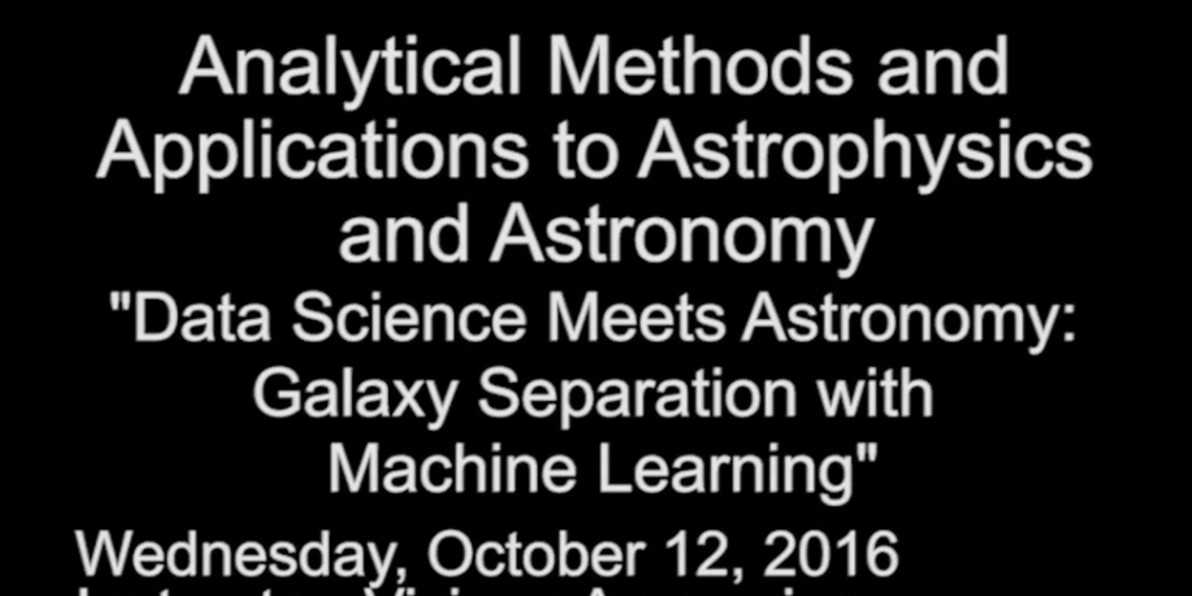ASTRO Fall Course: Data Science Meets Astronomy: Galaxy Separation with Machine Learning
October 12, 2016
Abstract
With the advance of digital imaging techniques, astronomy has become a data science in which knowledge creation depends on applying and developing sophisticated statistical methodology to large and/or complex data sets. This course will cover common types of data in astronomy such as light curves, spectra, and images as well as statistical methods used for analyzing these data sets, such as functional data analysis, measurement error models, hierarchical models, survival analysis, and machine learning techniques. An emphasis will be placed on the complexity of the inference tasks faced by astronomers and the propagation of uncertainty across several levels of inference. Guest lecturers will discuss topical issues in the analysis of astronomy data. Students will complete a final project in groups based on data or statistical methodology presented during the course.
The course will be aimed at a wide audience in an effort to appeal to students with either an astronomy or statistics background. While there are no formal prerequisites students will benefit from having some past experience with medium to large data sets and a familiarity with statistical methods such as maximum likelihood and regression. Theory will be kept to a minimum with an emphasis instead on astronomy data and statistical methodology.
